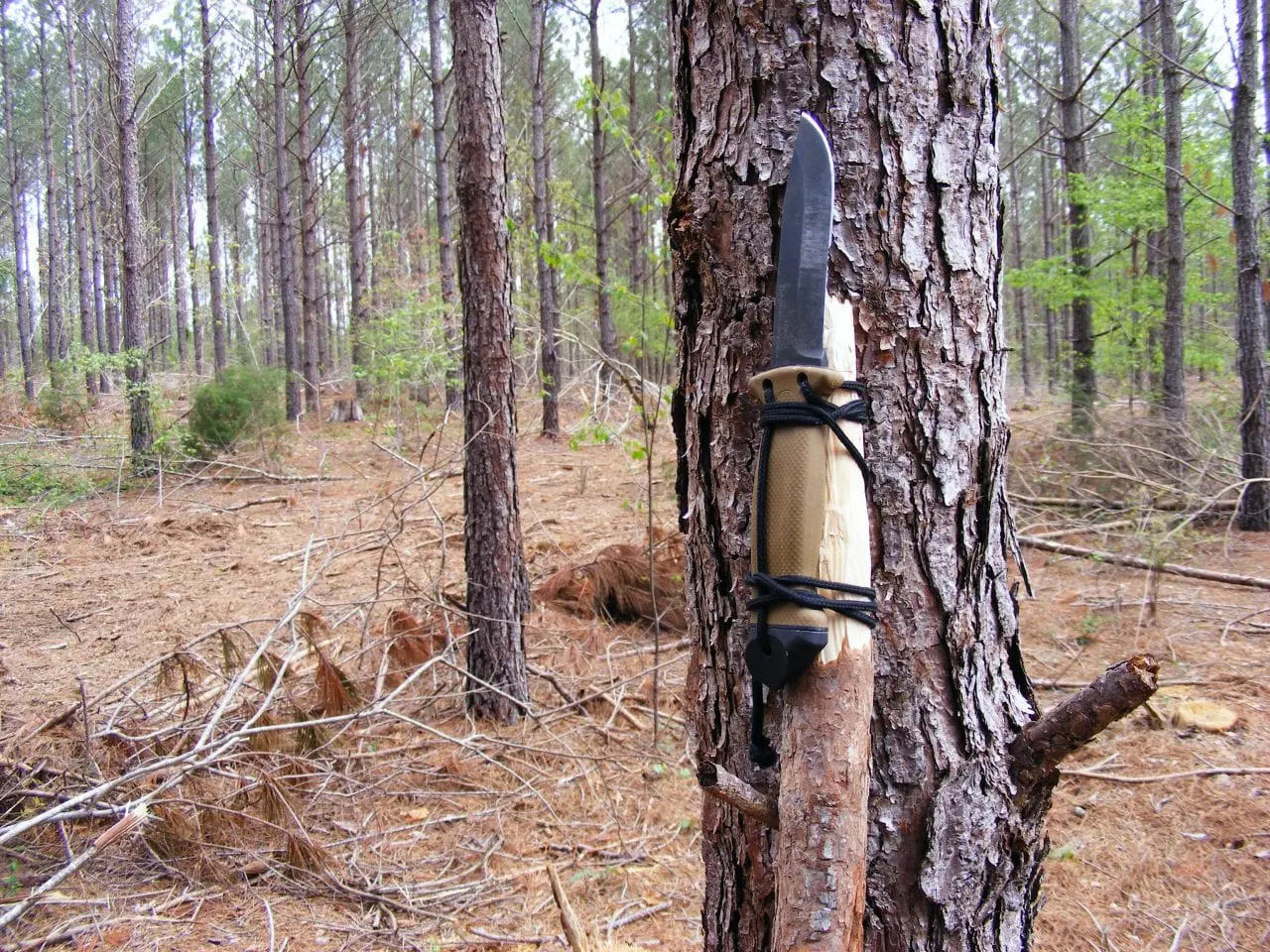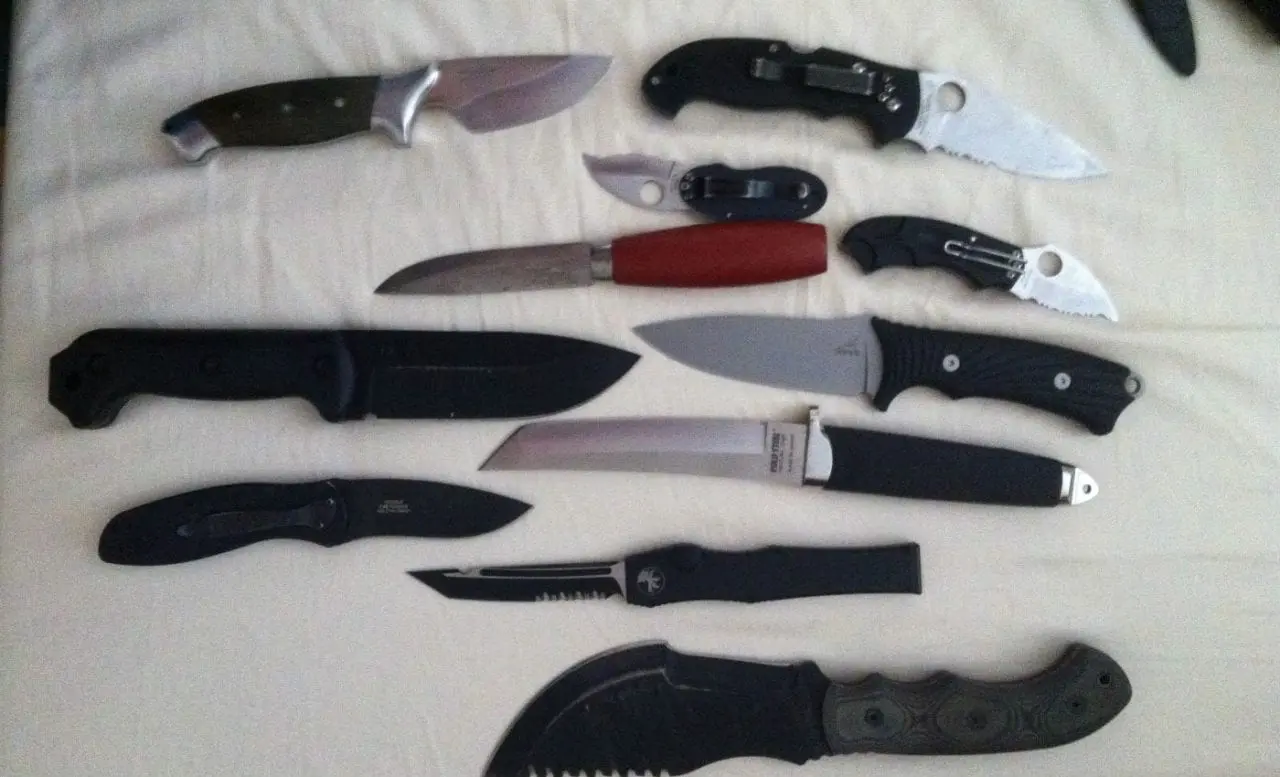5 Tips for Choosing The Best Survival Knife

Survival in an emergency or disaster depends on your knowledge, experience, tools and resources.
A good quality knife is one of the most important tools to keep handy in case of an emergency. A knife isn't just for survival in the woods, but it's a necessity in all environments -- including urban survival.
Before buying a survival knife, there are some things you need to consider.
A quick tip before we get started: don't just buy any knife. Spend some time -- and a bit of money -- and get a quality one. A quality knife can last you a lifetime.
An inexpensive low quality knife might seem fine when you first look at it -- but I wouldn't trust my life on it.
Uses for a survival knife
A survival knife has to be able to perform a lot of tasks. Art of Manliness posted a comprehensive list of uses for survival knives, which I think sums it up well:
- Self defense
- Cutting and slicing
- Digging
- Splitting
- First aid tool
- Food prep
- Shelter building
- Fire making
- Hunting
- Prying tool
- Signaling
- Hammering
- Make-shift screwdriver
Tip#1: Pick a full-tang knife
The tang is simply a more fancy word for the tongue that connects to blade to the shaft/handle of the knife. If you for some reason decided to break of the handle of the knife, what you would have left in your would be the tang.
When you're shopping around for knives you will see terms like full tang, half tang and rat tail tang frequently mentioned in the product descriptions.
Full tang vs. half tang
A full tang means that the knife in one solid metal piece and the two blade pieces are pinned onto the metal. These knives are stronger and less prone to damage, but are also more expensive.
On a half tang knife the metal will run the length of the handle, but only half the width.
A partial tang will not run the entire length of the knife.
Push tang and rat-tail tang
A push tang is a weaker construction, where the tang is pushed into the handle. It is usually glued in place. You will see two variations here: full and partial push.
Like the names imply, a full push is a full length tang pushed into the blade, while a partial push means that the tang is shorter than the knife.
A rat tail tang narrows as it goes down the handle of the knife, and it's often threaded at the end.
Recommendations
A narrow tang is fine for kitchen knives, but for a survival knife you want a wide full-tang knife. These are strong and durable, and can take a pounding when chopping wood, or splitting logs.
Full tang knives are also usually heavier and feel better in the hand. The weight also makes it better for batoning, hammering, hunting and self-defense.
Steer clear of partial tang knives though! The blade will usually, after some use, start to become wiggly and develop play. Worst case, if the blade and the handle separate, the knife will be practically useless.
A full tang knife can easily be wrapped in rope or cloth if the handle comes off.
Tip#2: The size of the knife
Picking a small knife, like a Swiss army knife or a multi tool might be tempting. A knife like that can do everything, and then some -- but you will be far better off picking a larger knife.
I agree that a Swiss army knife is a great thing to bring along. I wear one all the time, but it shouldn't be your survival knife.
Also, make sure the knife isn't too big. If you pick a large knife, more detailed tasks like dressing game and carving might be harder to do.
Personally: after trying all sorts of knives, I found the sweet-spot to be between 9 and 11 inches -- but you have to see what works for you obviously.
Tip#3: Make sure you get a fixed blade!
A fixed blade knife is stronger and more durable than a folding blade knife.
I like to keep things simple. The less stuff that can break, like the joint on a folding blade, the better.
Folding blade knives are like partial tang knives: fine for everyday carry or a backup, but not reliable or strong enough for a survival knife.
Tip#4: Steel isn't steel
Even though steel is just iron with carbon in it, there's a lot more to it.
Steel, it's alloys and properties is actually a whole science -- something I've learned from working in the oil industry.
In addition to carbon (which is present in all steel), other alloys are added to the steel to give it specific properties. These elements can be:
- Chromium: Corrosion resistance and durability
- Manganese: Contributes to hardenability
- Nickel: Adds toughness
- Phosphorus: is present in most steel. It's a contamination that reduces the steels toughness
- Silicon: Adds to the strength
- Tungsten: Carbide former for wear resistance.
- Sulfur: Decreases toughness
- Vanadium: A carbide former like tungsten, but harder
Different grades of steel
Steel comes in different qualities (grades). Higher grade steel is more expensive, but you shouldn't skimp on the steel quality.
The quality of the steel will impact how easy it is to sharpen, it's resistance to the elements and how long it will keep the edge.
I won't go too much in depth on all the types of steel -- it's a whole science like I said above -- but commonly these steel types are recommended:
Carbon steel and stainless steel
Knives are usually made from either carbon steel or stainless steel.
Stainless steel is more resilient to rust, but it's also more brittle. A brittle knife is less tough and harder to sharpen.
Carbon steel knives are easier to sharpen, can be made extremely sharp and they're tougher for heavy use like chopping, batoning and splitting as they're typically less brittle.
The differences between carbon and stainless steel become less evident when you go up in price, quality and steel grades, but it's still something you should keep in mind.
What's the best steel then?
I've included some of the commonly recommended steel types below. Which one is the best will depend on your use, but you can't go wrong with any of these really.
Recommended Stainless Steels
- S60V
- BG-42
- S90V
- CPM S30V
- CPM 154
Recommended Carbon Steels
- D2
- A2
- O1
- Carbon V
- CPM 154
Tip#5: Pick a sharp tip and a single blade
Different knife tips have different uses. A knife made for chopping garlic or for fighting will not be ideal in the woods.
For survival pick a sharp tip like drop point or clip point. This is the most versatile knife point.
For survival knives, single edge is the way to go. Don't go for a double edge dagger style knife -- even though it looks cool.
You want the spine of the knife (the other side of the blade opposite of the edge) to be flat. This gives you a good hitting platform for splitting wood or batoning.
Other things to consider
The 5 tips above are the most important things to consider. Once you have these nailed down, there are some other things you need to consider as well.
A lot of these will depend on your personal preferences:
- Which handle material is right for you (rubber, wood, bone)?
- Do you want it with or without finger guards?
- Blood grove or no blood grove
- Sheet
- Lanyard holes
- Color and finish
(Picture by Mike Petrucci, CC)



